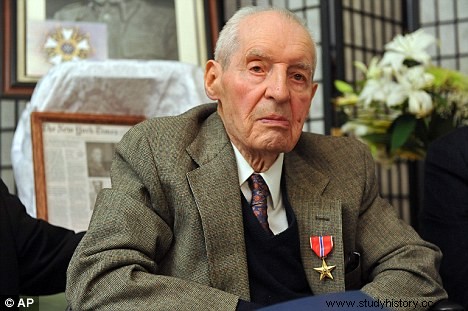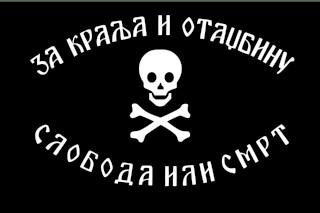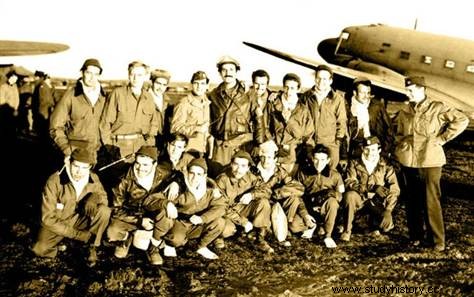On October 14, 2010, at the age of 95, George Vujnovich – agent of the OSS (Office of Strategic Services) , the United States intelligence service during World War II and considered the forerunner of the CIA – was awarded the Bronze Star Medal of Honor in a ceremony held at the St. Sava Serbian Orthodox Cathedral in Manhattan.

George Vujnovich
But who was George Vujnovich?
Born on May 31, 1915 in Pittsburgh (USA), the son of immigrants from Serbia, he was studying in Belgrade (Yugoslavia) with the hope of becoming a doctor when the Germans invaded Yugoslavia in 1941. Together with his wife, Mirjana Lazych , he fled through various countries until he landed in Africa where he worked for Pan American World Airways . Due to his Serbian origins and his years in Belgrade, the OSS contacted him and recruited him. Mirjana, who had been exiled to the US, was working at the Yugoslav embassy in Washington when reports came into her hands about a Serbian guerrilla who had rescued and hidden several airmen shot down by the Germans. She passed the information on to her husband stationed in southern Italy since 1943.
That guerrilla was the Chetniks . A Serbian nationalist and monarchist guerrilla organization led by Dragoljub Mihailovich , a former colonel of the Yugoslav General Staff. Following the invasion of Yugoslavia, the country was partitioned between Germany, Italy, Hungary, Bulgaria and two puppet regimes:the Independent State of Croatia and the Government of National Salvation of Serbia . In addition, various paramilitary groups such as the Partisan Liberation Army were spread throughout the country. , the communists led by what would later be Marshal Tito , and the Chetniks. These, faced with German superiority and their bloody reprisals, decided to opt for passive resistance until Germany weakened and to be able to strike the big blow to create Greater Serbia. The partisans, for their part, opted for active resistance, especially when the Germans invaded the USSR. That situation caused clashes between the guerrillas themselves to the point that the Chetniks came to support the Germans in their clashes with the partisans.

Chetniks. “For king and country; freedom or death»
After the successful Allied invasion of Sicily, in the fall of 1943 the Allies occupied all of southern Italy. At the end of 1943, the US 15th Air Force was transferred from Tunisia to Foggia (Italy) from where they attacked the oil wells and refineries in Romania that Hitler considered the main source of fuel. To bomb the fields, the planes had to cross Yugoslav territory where several of them were shot down and more than 500 airmen rescued and hidden by the Chetniks. In Bari, Vujnovich drew up a rescue plan. Although at first his superiors were reluctant because Dragoljub Mihailovich, the leader of the Chetniks, was not fighting openly against the Germans, after studying the plan they gave their approval… Operation Halyard . Vujnovich instructed three OSS field agents who would infiltrate enemy lines. In August 1944, the three agents with radio transmitters were parachuted into the Chetnik-controlled area.

Rescued airmen with Vujnovich on the right
From Bari, Vujnovich coordinated the rescue with the agents and the help of Mihailovich. For several months landing strips were improvised, safe evacuation points were located and all the downed aviators were rescued without any casualties... a total of 512 . In 1946, after the war, the communist authorities in Yugoslavia executed Mihailovich for collaborating with the Nazis. In 1948, US President Harry Truman posthumously awarded the Serb the Legion of Merit but it was not made public so as not to alienate Yugoslavia.
George Vujnovich had to wait until 2010 for his work to be recognized. In April 2012 he passed away .
Sources:Daily Mail, NBC News, The Telegraph
